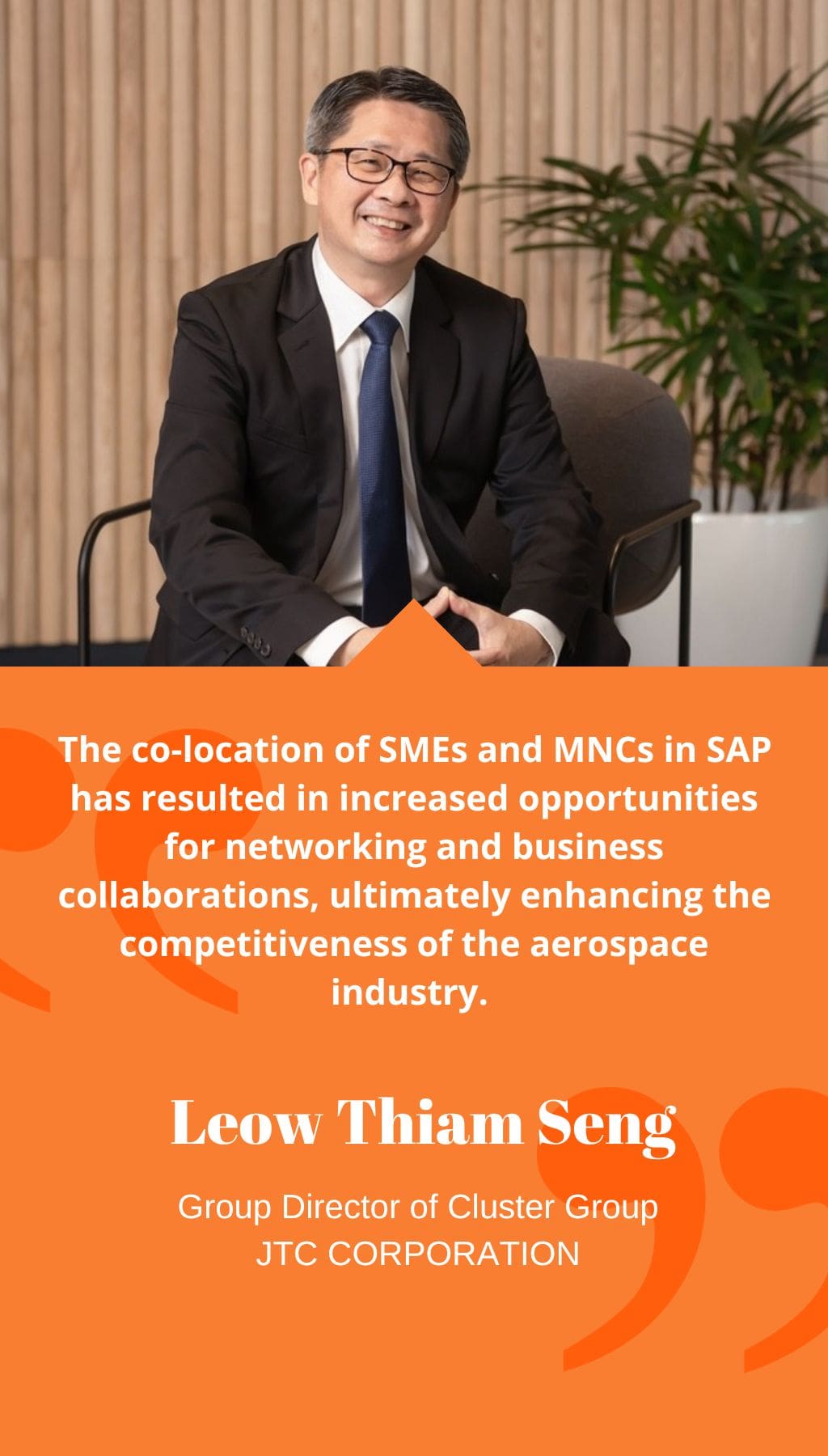
- Singapore | 12 May 2019

Could you provide a brief background of JTC’s history in Singapore and outline your key objectives within the aerospace industry?
JTC, set up in 1968, is the lead government agency in Singapore responsible for the development of industrial infrastructure to support the growth of industries and enterprises. JTC has been involved in landmark projects such as the Jurong Industrial Estate, Jurong Island, business and specialized parks like Airport Logistics Park of Singapore, International Business Park, Changi Business Park, CleanTech Park, and Tuas Biomedical Park, as well as innovative developments like one-north and Jurong Rock Caverns. JTC also creates innovative space solutions such as JTC Surface Engineering Hub, JTC MedTech Hub, and JTC Food Hub to enable industrialists to start operations quickly and enhance productivity.
Could you describe JTC’s developments and future outlook for Seletar Aerospace Park?
Seletar Aerospace Park (SAP) is one of JTC’s iconic developments aimed at growing Singapore as an aerospace hub. Since its inception in 2007, SAP has evolved into a world-class integrated aerospace hub that hosts a diverse range of aerospace-related activities. Spanning across 320 hectares of purpose-built land and infrastructure, including the Seletar Airport, SAP is currently home to over 60 companies, including multinational corporations (MNCs) such as Rolls Royce, Pratt & Whitney, Airbus Helicopters, and Bombardier, as well as local small and medium-sized enterprises (SMEs). SAP boasts a thriving aerospace community with nearly 5,000 working professionals.
Could you speak of the success that SAP has had in developing the aerospace ecosystem?
SAP has been instrumental in helping the aerospace industry attract its supply chain, thus creating a comprehensive ecosystem that fosters the growth of good jobs in the industry and in Singapore. The co-location of SMEs and MNCs in SAP has resulted in increased opportunities for networking and business collaborations, ultimately enhancing the competitiveness of the aerospace industry. For instance, the establishment of the Rolls-Royce Seletar Campus has not only attracted world-class supporting suppliers like RLC but has also spurred positive spinoffs and expansion into SAP by local companies like JEP Precision Engineering, which manufactures Rolls-Royce engine casings and rings for Trent engines. Another example is Wah Son, an SME that has strategically established itself in SAP, enhancing its growth and facilitating integrated business collaboration with aerospace MNCs. Wah Son, which started as a traditional family-run machining workshop in 1971, has evolved into a global leading aerospace engine tooling manufacturer, and its move to SAP in July 2015 has been a crucial enabler for its expansion and capability development. Wah Son has since formed partnerships with Pratt & Whitney, Bombardier, and Vector Aerospace within the estate, showcasing how being in SAP has facilitated its progression.
SAP provides industrialists with the necessary supporting infrastructure and allows them to seize potential synergies by being clustered together. Being in SAP brings them closer to their customers, which helps to improve business linkages and operational efficiency. Beyond infrastructure, JTC is building a strong knitted community in SAP, could you speak of this?
Absolutely! The next stage of SAP’s development is focused on building a strong and close-knit community that fosters a sense of belonging and identity, creating a community that is greater than the sum of its parts. To achieve this, JTC organizes regular events for the SAP community, including networking events, lunchtime talks, and exercise classes. Additionally, focus group sessions are held regularly to engage and understand the needs of the community. These initiatives provide companies in SAP with a platform to network and lay the groundwork for possible collaborations.














